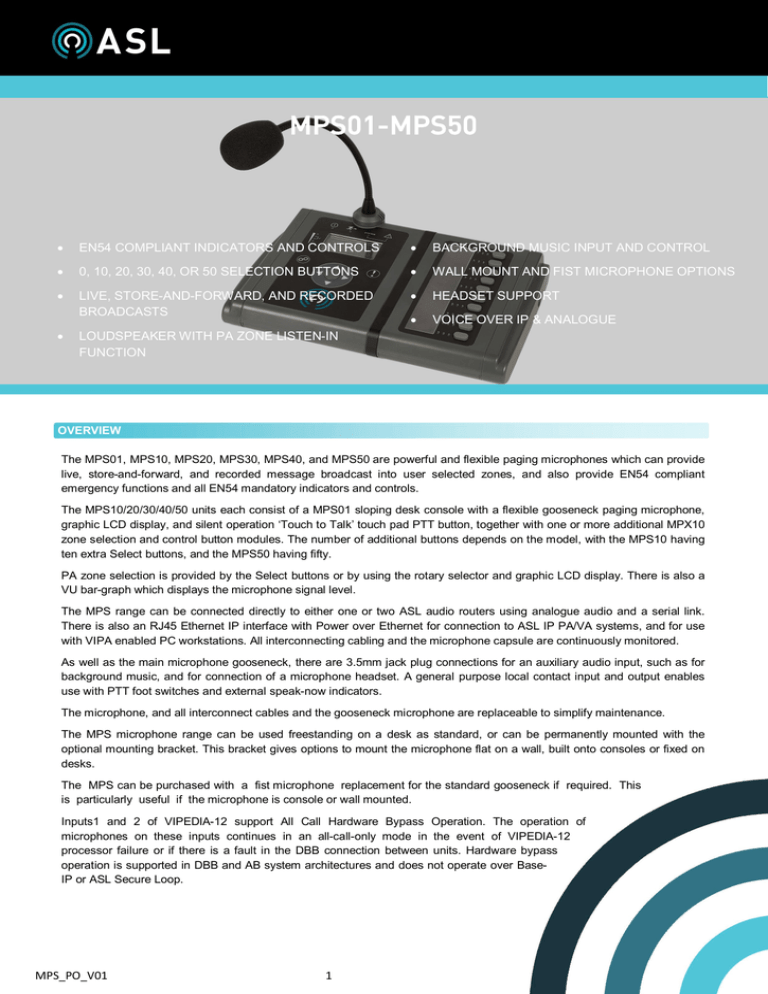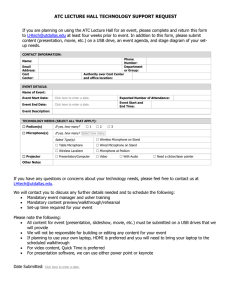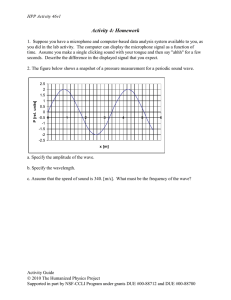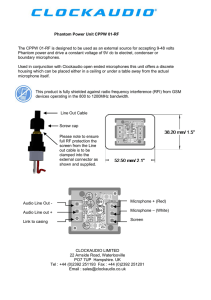
MPS01-MPS50
VIPEDIA-12
EN54 COMPLIANT INDICATORS AND CONTROLS
BACKGROUND MUSIC INPUT AND CONTROL
0, 10, 20, 30, 40, OR 50 SELECTION BUTTONS
WALL MOUNT AND FIST MICROPHONE OPTIONS
LIVE, STORE-AND-FORWARD, AND RECORDED
BROADCASTS
HEADSET SUPPORT
VOICE OVER IP & ANALOGUE
LOUDSPEAKER WITH PA ZONE LISTEN-IN
FUNCTION
OVERVIEW
The MPS01, MPS10, MPS20, MPS30, MPS40, and MPS50 are powerful and flexible paging microphones which can provide
live, store-and-forward, and recorded message broadcast into user selected zones, and also provide EN54 compliant
emergency functions and all EN54 mandatory indicators and controls.
The MPS10/20/30/40/50 units each consist of a MPS01 sloping desk console with a flexible gooseneck paging microphone,
graphic LCD display, and silent operation ‘Touch to Talk’ touch pad PTT button, together with one or more additional MPX10
zone selection and control button modules. The number of additional buttons depends on the model, with the MPS10 having
ten extra Select buttons, and the MPS50 having fifty.
PA zone selection is provided by the Select buttons or by using the rotary selector and graphic LCD display. There is also a
VU bar-graph which displays the microphone signal level.
The MPS range can be connected directly to either one or two ASL audio routers using analogue audio and a serial link.
There is also an RJ45 Ethernet IP interface with Power over Ethernet for connection to ASL IP PA/VA systems, and for use
with VIPA enabled PC workstations. All interconnecting cabling and the microphone capsule are continuously monitored.
As well as the main microphone gooseneck, there are 3.5mm jack plug connections for an auxiliary audio input, such as for
background music, and for connection of a microphone headset. A general purpose local contact input and output enables
use with PTT foot switches and external speak-now indicators.
The microphone, and all interconnect cables and the gooseneck microphone are replaceable to simplify maintenance.
The MPS microphone range can be used freestanding on a desk as standard, or can be permanently mounted with the
optional mounting bracket. This bracket gives options to mount the microphone flat on a wall, built onto consoles or fixed on
desks.
The MPS can be purchased with a fist microphone replacement for the standard gooseneck if required. This
is particularly useful if the microphone is console or wall mounted.
Inputs1 and 2 of VIPEDIA-12 support All Call Hardware Bypass Operation. The operation of
microphones on these inputs continues in an all-call-only mode in the event of VIPEDIA-12
processor failure or if there is a fault in the DBB connection between units. Hardware bypass
operation is supported in DBB and AB system architectures and does not operate over BaseIP or ASL Secure Loop.
MPS_PO_V01
1
ANALOGUE INTERFACES
IP INTERFACES
VIPEDIA-12 IP Interface
The standard VIPEDIA-12 microphone interface can also
be configured to operate over Ethernet. In this case, the
MPS is configured against a real VIPEDIA-12 analogue
inputs. Functionality is identical to an analogue interface
MPS. IP microphone preannouncement chimes are
configured to be played locally from the MPS microphone.
Single Interface
The standard connection method uses the Router 1
Microphone Port connected direct to a single ASL audio
router.
Dual Interface / Single Routers
If the MPS is used with a single audio router, then both
the Router 1 and Router 2 Microphone Ports can be used,
in order to provide dual redundant cabling between the
MPS microphone and the router.
VIPA Interface
An IP connected MPS microphone can work as a
workstation microphone with a VIPA equipped ASL or
third party IP PA Control System.
Broadcasts from the MPS are normally be controlled via
the workstation GUI; however the MPS microphone can
operate independently.
Dual Interface / Multiple Routers
If the MPS is used with a PA/VA system which has two or
more VIPEDIA-12, then both the Router 1 and Router 2
Microphone Ports can be used, one connected to each
ASL Audio Router.
This option is supported across DBB, Base-IP, ASLSecure Loop and AB architectures. Hardware bypass is
only operational across DBB or AB architectures in multirouter systems.
The analogue and IP interfaces described above, rely on
Dual Interface - Paging & Local Music
If the MPS is used with a local music source connected
into its rear mounted 3.5mm audio input socket, then both
the Router 1 and Router 2 Microphone Ports can be used,
one for the music feed and one for the microphone.
IP FALLBACK MODE
a host device (usually a VIPEDIA-12 or VIPA software
module) for operation.
If the host device becomes unavailable, it is possible to
configure the MPS microphone to continue in limited
operation ‘Fall-back Mode’, whereby it can address zones
on multiple devices directly over an Ethernet network
without the need for a host device.
This will provide simultaneous operation of the
microphone to make a broadcast to some PA zones while
the music feed continues to be played into other PA zones
.
In IP Fall-back mode, iPAMs can be addressed a single
zone. VIPEDIA-12 zones can be addressed individually or
as a group as necessary. Please see the ASL System
Design Guide for more information.
2
The MPS microphone normally operates as a slave device and is hosted by VIPEDIA-12 or by any of ASL’s VIPA enabled
products including VIPEDIA-NET, iPAM and the VIPA-HOST. It can be configured to act in IP Fallback mode if communications with the normal host is lost. The feature set available in each of these applications is different. Please see below:
VIPEDIA-12 Features
Live Paging
Store and Forward Paging
Listen In
Volume Control
Fixed Route Button
Zone Selectable Route Button
Key Switch Priority
Key Switch ANS
Key Switch Emergency Type
Key Switch Chime Type
Key Switch Protected DVA
EN54 Mandatory Indications
Fault Clear
VIPA Features
Fall-back IP Features
Live Paging
Store and Forward Paging
Listen In
Control BGM in a VIPA System
Fault Clear
Fault Status
Mute in a VIPA System
Live Paging
Store and Forward Paging
SPECIFICATION
Power Supply
Input Voltage......................................... Dual 18 to 48 V DC
Current Consumption @ 24V (nom.- sounder & LEDs off)
MPS01....................................................................... 90mA
MPS10....................................................................... 95mA
MPS20..................................................................... 100mA
Each additional MPX10 ................................................ 5mA
Current Consumption @ 24V (max. - sounder & LEDs on)
MPS01..................................................................... 165mA
MPS10..................................................................... 220mA
MPS20..................................................................... 275mA
Each additional MPX10 .............................................. 55mA
Additional Connectivity
Music Input .... 1 x 3.5mm jack balanced / unbalanced stereo
Output (Speakers, Headset) ..... 1 x 3.5 mm jack unbalanced
Contact Input (Ext. PTT) ............................. .1 x 3.5 mm jack
Contact Output (Speak Now)1 x 3.5 mm jack (open-collector)
Mechanical
Dimensions (H x W x D mm)
MPS01 ...................... 58 x 175 x 200 (excluding gooseneck)
MPS10 ...................... 58 x 285 x 200 (excluding gooseneck)
MPS20 ...................... 58 x 395 x 200 (excluding gooseneck)
Each additional MPX10 ..................................... +110mm W
Weight
MPS01 ....................................................................... 1.0kg
MPS10 ....................................................................... 1.2kg
MPS20 ....................................................................... 1.4kg
Each additional MPX10 ............................................ +0.2kg
Analogue ASL PAVA System Connection
Audio Output .............. Dual Analogue / 0dBu nominal / 220R
Hardware Bypass Interface........... 2 x PTT & 2 x Speak Now
Listen In Input ............................................ Single Analogue
IP ASL PAVA System Connection
Connection ....................... 1 x 100BASE- T Ethernet (RJ45)
Audio Format .............................. ASL PMC Compliant VoIP
Listen In Input ................................... Single ASL PMC VoIP
Environmental
Temperature (Storage) .............................. -20 °C to +55 °C
Temperature (Operation) ........................... -10 °C to +55 °C
Humidity Range......................... 0% to 95% non-condensing
IP Rating ..................................................................... IP30
This equipment is designed and manufactured to conform to the following EC standards:
EMC: EN55103-1/E1, EN55103-2/E5, EN50121-4, ENV50204
Safety: EN60065
Manufacturer
Application Solutions (Safety and Security) Limited
Unit 17 - Cliffe Industrial Estate - Lewes - East Sussex - BN8 6JL - U.K.
Tel: +44(0)1273 405411
www.asl-control.co.uk
All rights reserved.
Information contained in this document is believed to be accurate, however no representation or warranty is given and Application Solutions (Safety and Security) Limited assumes no liability with
respect to the accuracy of such information.
3





